40 ergonomics is the science of
Ergonomics | Science project | Education.com Ergonomics is the science of designing custom work environments to increase productivity and decrease injury. Most commonly ergonomics has been applied to the office setting where an individual is working on a computer for prolonged periods of time. The Science of Ergonomics - Workspace SolutionsWorkspace ... Ergonomics is an applied science — designing and arranging things people use so that the people and things interact as efficiently and safely as possible. Ergonomic product designers study how the human body uses or fits with a product — then they strive to decrease fatigue and discomfort through that product's design.
PDF Ergonomics and human factors at work - HSE Ergonomics is a science concerned with the 'fit' between people and their work. It puts people first, taking account of their capabilities and limitations. Ergonomics aims to make sure that tasks, equipment, information and the environment fit each worker.

Ergonomics is the science of
Fulfilling the Bargain: How the Science of Ergonomics Can ... Ergonomics, the new applied science for the workplace, is broadly defined as "[t]he science relating to man and his work." Stasior v. Nat'l R.R. Passenger Corp., 19 F.Supp. 2d 835, 847 (N.D. 111. 1998) (citing Dorland's Illustrated Medical Dictionary 574 (W.B. Saunders Co., 28th ed. 1994)). ... Ergonomics Definition & Meaning - Merriam-Webster The meaning of ERGONOMICS is an applied science concerned with designing and arranging things people use so that the people and things interact most efficiently and safely —called also biotechnology, human engineering, human factors. How to use ergonomics in a sentence. Chapter 1: Ergonomics and Wellness (ergonomics and human ... The science of ergonomics promotes a holistic approach which considers the physical, cognitive and organizational environment. Each of these components of ergonomics has a specific set of considerations. Ergonomics draws on a number of scientific disciplines, including: Anthropology. Physiology.
Ergonomics is the science of. Ergonomics - an overview | ScienceDirect Topics ergonomics (or human factors) is the scientific discipline concerned with the understanding of interactions among humans and other elements of a system, and the profession that applies theory, principles, data, and methods to design in order to optimize human well-being and overall system performance. Ergonomists contribute to the design and ... Definition of Ergonomics - ThoughtCo Definition: Ergonomics is the science of work. Ergonomics derives from two Greek words: ergon, meaning work, and nomoi, meaning natural laws. Combined they create a word that means the science of work and a persons relationship to that work. In application ergonomics is a discipline focused on making products and tasks comfortable and efficient ... Ergonomics - InsideEWU Ergonomics. Ergonomics is the science of designing the job, equipment, and workplace to fit the worker. The idea is to change how or where work is being done to prevent or eliminate awkward body movements on the part of the worker. Proper ergonomic design is necessary to prevent repetitive strain injuries which can develop over time. The Science of Ergonomics - Ergonomicsdirect Jun 15, 2018 · The science of ergonomics is about improving or enhancing the interaction between people and things and spaces. It is about minimising or ideally removing the risks of injury or harm for an overall better experience or better work performance in many cases. Ergonomics is a constantly evolving science.
The Science of Ergonomics | PDF | Human Factors And ... Ergonomics is the science of fitting workplace conditions and job demands to the capabilities of employees. ( U.S. Dept.of Health) Ergonomic principles are used to improve the fit between the worker and the workplace. A practical approach to Ergonomics considers the match between the person, the equipment they use, the work processes and the ... Ergonomics : OSH Answers Ergonomics is the science of matching the job to the worker and the product to the user. This section covers situations such as lifting, lighting, office/desk set up, etc. that may contribute to injury. This section also includes information on health and safety concerns when working shiftwork and extended work days. What Is Ergonomics? | The International Ergonomics ... Definition and Applications. The word ergonomics — "the science of work" is derived from the Greek ergon (work) and nomos (laws). Ergonomics (or human factors) is the scientific discipline concerned with the understanding of interactions among humans and other elements of a system, and the profession that applies theory, principles, data, and methods to design in order to optimize human ... Ergonomic & Anthropometric - Ergonomics and Anthropometrics Ergonomics is the science of designing environments and products to match the individuals who use them. It is also known as human factors, describes the information about humans in working situations. Proper ergonomic design is necessary to prevent repetitive strain injuries, which can develop over time and can lead to long-term disability. When designing your product …
Ergonomics - Overview | Occupational Safety and Health ... Ergonomics --- fitting a job to a person --- helps lessen muscle fatigue, increases productivity and reduces the number and severity of work-related MSDs. Impact of MSDs in the Workplace Work-related MSDs are among the most frequently reported causes of lost or restricted work time. Definition of ergonomics - HFEM Definition. The word ergonomics — "the science of work" is derived from the Greek ergon (work) and nomos (laws).Ergonomics (or human factors) is the scientific discipline concerned with the understanding of interactions among humans and other elements of a system, and the profession that applies theory, principles, data, and methods to design in order to optimize human well-being and ... Best Toe Kick Dimensions for Cabinet Design - ThoughtCo 28.09.2019 · Science, Tech, Math ... B.I.D, Industrial and Product Design, Auburn University; Chris Adams is a human factors engineer who writes about ergonomics and has 11 years of experience in the field. Learn about our Editorial Process. Updated on September 28, 2019. At the bottom of every base floor cabinet in your kitchen or bathroom, you will notice a notched profile … Free Ergonomics Handout: Ergonomics 101—The Science of Work 20.10.2016 · Ergonomics 101—The Science of Work. Ergonomics is the science of work. It’s about fitting jobs and tasks to the workplace athlete so they are safer, healthier, more comfortable and more productive. This is part of your company’s commitment to providing a safe work environment for all workplace athletes.
Ergonomics - Occupational Safety and Health Administration Ergonomics is the science of fitting the job to the worker. Designing work stations and tools to reduce MSDs can help workers stay healthy and companies to reduce or eliminate the high costs associated with MSDs. MSD Risk Factors We often think of ergonomic problems being associated with your computer or mouse, but the fact is there are many repetitive motions that can cause …
The Science of Office Ergonomics - COS Ergonomics and human factors is the science of designing the office or working space to suit the needs of employees. Office ergonomics is vital for maintaining the physical health and wellbeing of workers, ultimately benefitting the business in the process.
Examples of ergonomics and benefits it brings ️ Postposmo ️ The ergonomics. It is defined as the scientific knowledge, applications and criteria aimed at optimizing work, its systems, products, spaces and environments to be adapted to the person's physical and mental capabilities and limitations.
Ergonomics 101: The Definition, Domains, and Applications of ... Whether you’re an ergonomics pro or you’re new to the field, it’s helpful every once in a while to take a broad view of what ergonomics is and how its fundamental principlescan be applied. At the very least, you’ll be able to explain what ergonomics is in a social setting. At the very best, you’ll start to see how deeply the field of ergonomics impacts your world at work, at home and the places in between.
The Science of Ergonomics - Human Solution Ergonomics is a rich, multi-disciplined field that uses science and engineering principles to better the ways in which we work. In the interest of worker safety, comfort and productivity, we hope to help you put these principles to work in your own business.
Ergonomic Flashcards | Quizlet Ergonomics is the science of designing the job, equipment and workplace to fit the worker, reducing fatigue, discomfort and injury. Carpel Tunnel Syndrome is an illness: caused by repetitive strain on the wrist. Name four (4) factors that should be considered when arranging an employee's workstation.
What is Ergonomics? Ergonomics in the Workplace | Humanscale Ergonomics is about designing for people. Defined as the science of fitting a workplace to the user's needs, ergonomics aims to increase efficiency and productivity and reduce discomfort. Think about the angle of your computer monitor, or the height of your desk. Think about whether your eyes are strained by the end of the day or if your ...
Ergonomics - Environment, Health and Safety "Ergonomics (or human factors) is the scientific discipline concerned with the understanding of the interactions among human and other elements of a system, and the profession that applies theory, principles, data and methods to design in order to optimize human well-being and overall system performance."
How does Ergonomics work Ergonomics is a relatively new ... Ergonomics is a relatively new branch of science which celebrated its 50th anniversary in 1999, but relies on research carried out in many other older, established scientific areas, such as engineering, physiology and psychology. To achieve best practice design, Ergonomists use the data and techniques of several disciplines: Anthropometry: body ...
The Science of Ergonomics: Why Does It Matter for WFH ... The etymology of the word "ergonomics" was derived from the Greek word "ergon" which means work and "nomos" which means laws. It is the "laws of work" or "science of work." Ergonomic engineering eliminates compatibility issues between the workplace and the worker, resulting in the optimal work setting.
The Ergonomics Center - Advancing the Science of ... Consulting Services. Ergonomics Culture & Program Development. Industrial Ergonomics Evaluations. Office Ergonomics Evaluations. Engineering Guidelines and Checklists. Continuous Improvement Events.
What Exactly Is Ergonomics - Current Technologies And Blog ... The Three Ergonomic Domains. The International Ergonomics Association divides the science of ergonomics into three separate domains. The first is physical ergonomics. This deals with the responses of the human body to physiological as well as physical stress. The second domain of ergonomics deals with the cognitive aspect.
Chapter 1: Ergonomics and Wellness (ergonomics and human ... The science of ergonomics promotes a holistic approach which considers the physical, cognitive and organizational environment. Each of these components of ergonomics has a specific set of considerations. Ergonomics draws on a number of scientific disciplines, including: Anthropology. Physiology.
Ergonomics Definition & Meaning - Merriam-Webster The meaning of ERGONOMICS is an applied science concerned with designing and arranging things people use so that the people and things interact most efficiently and safely —called also biotechnology, human engineering, human factors. How to use ergonomics in a sentence.
Fulfilling the Bargain: How the Science of Ergonomics Can ... Ergonomics, the new applied science for the workplace, is broadly defined as "[t]he science relating to man and his work." Stasior v. Nat'l R.R. Passenger Corp., 19 F.Supp. 2d 835, 847 (N.D. 111. 1998) (citing Dorland's Illustrated Medical Dictionary 574 (W.B. Saunders Co., 28th ed. 1994)). ...


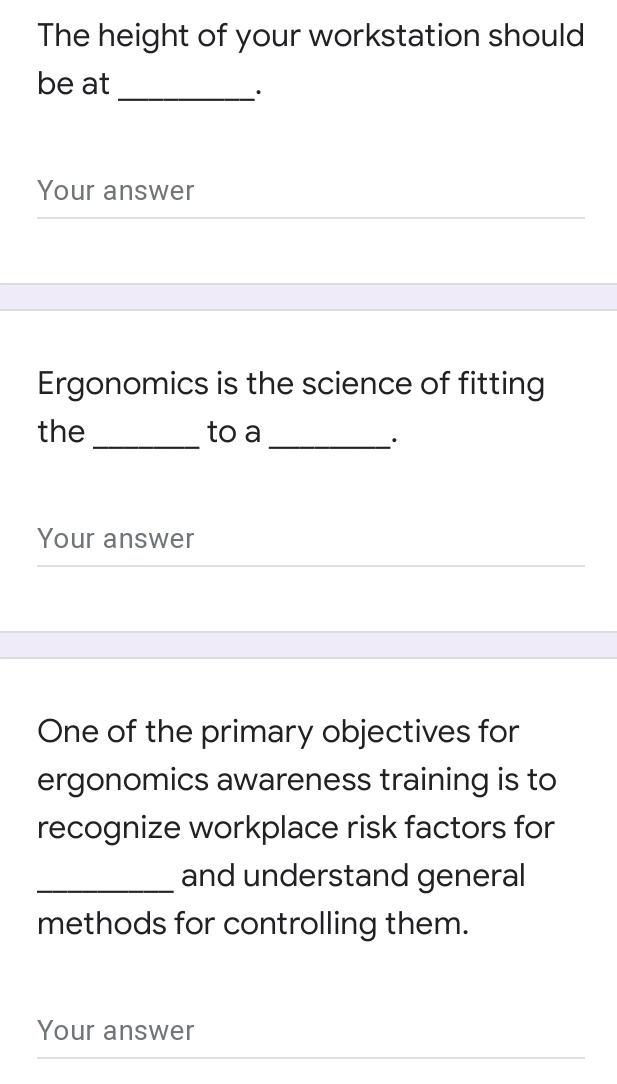








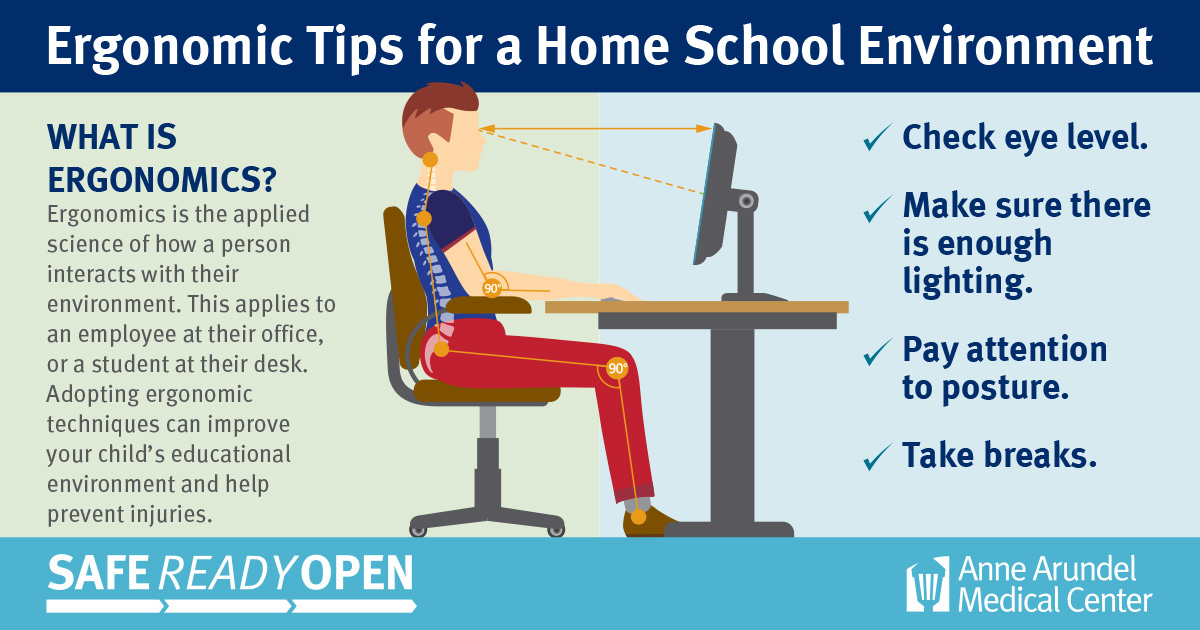

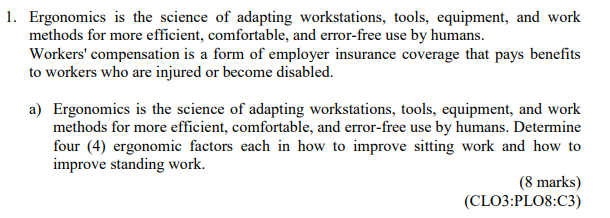










.jpg)
![Presented by: [name] Ergonomics Awareness. What “What is ...](https://images.slideplayer.com/30/9517232/slides/slide_2.jpg)

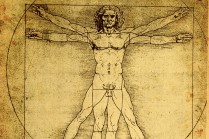






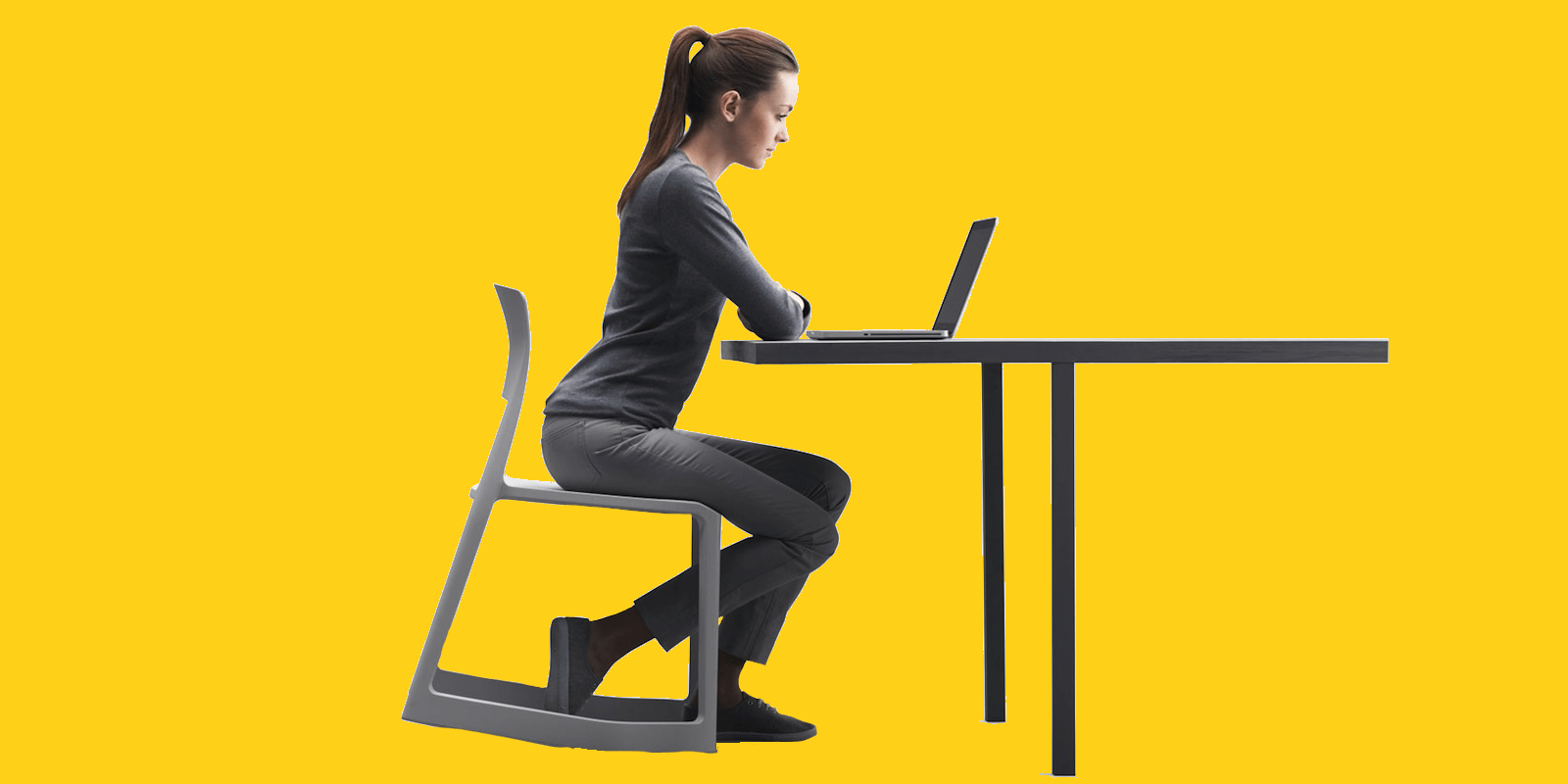
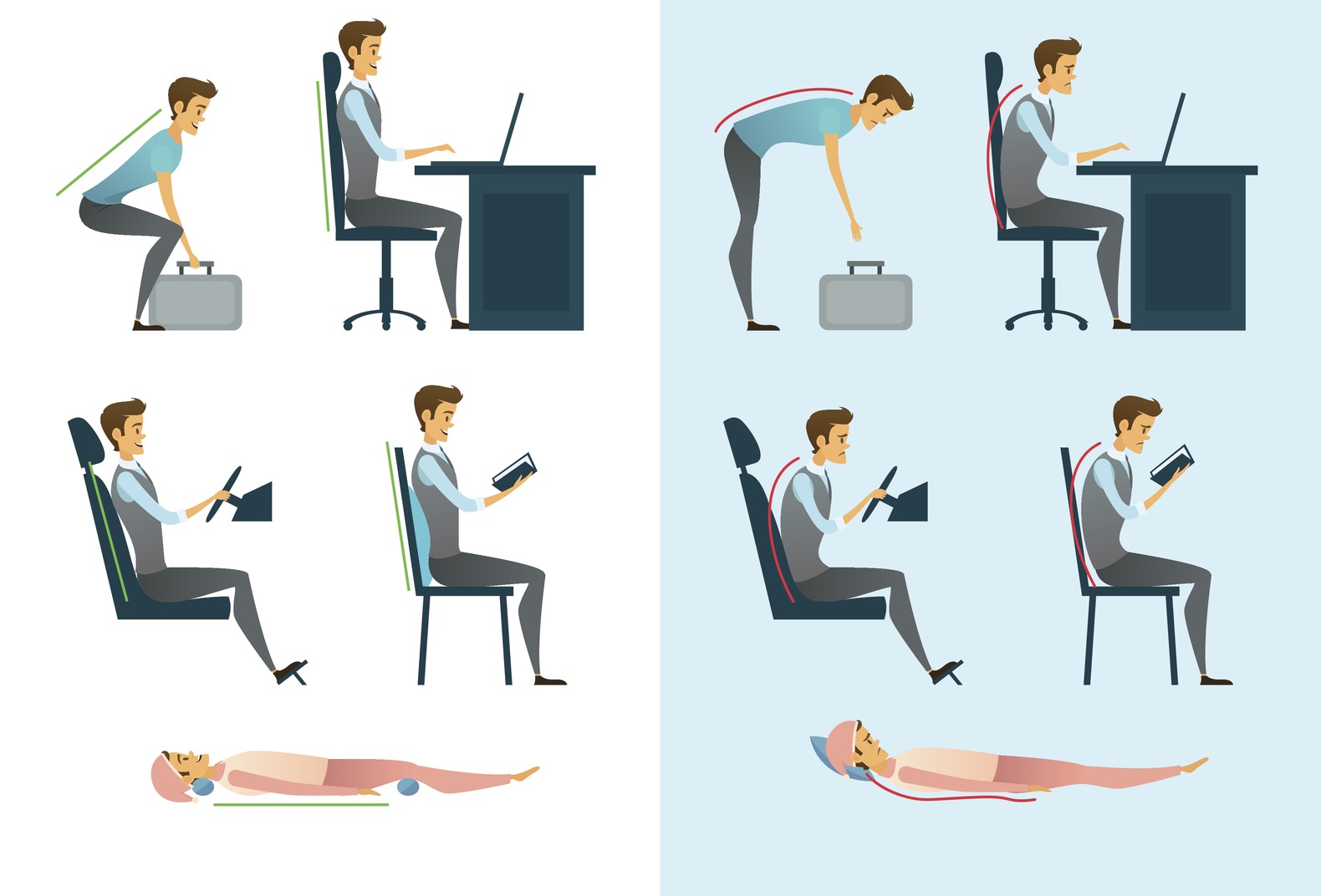

0 Response to "40 ergonomics is the science of"
Post a Comment